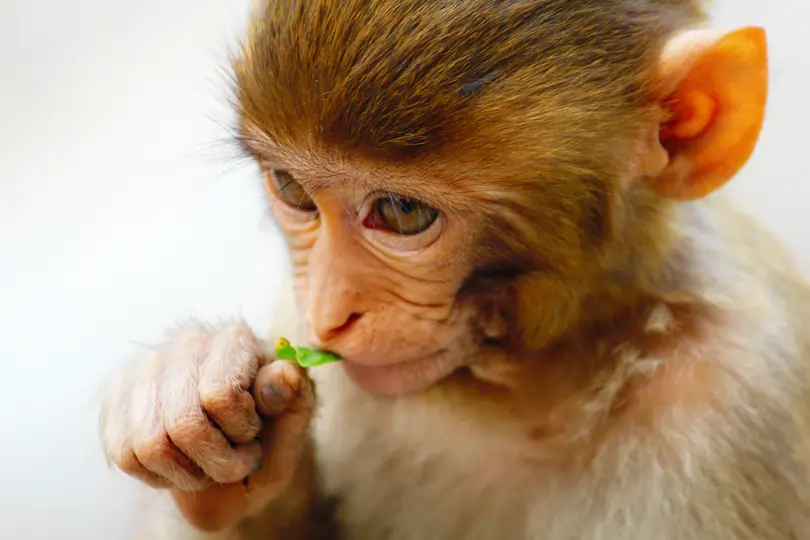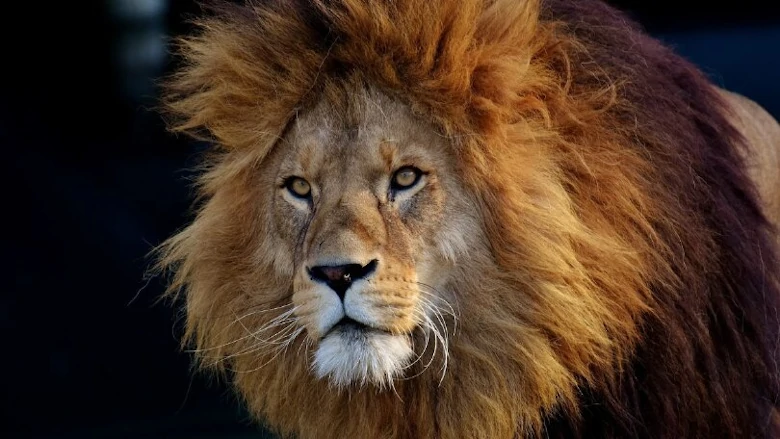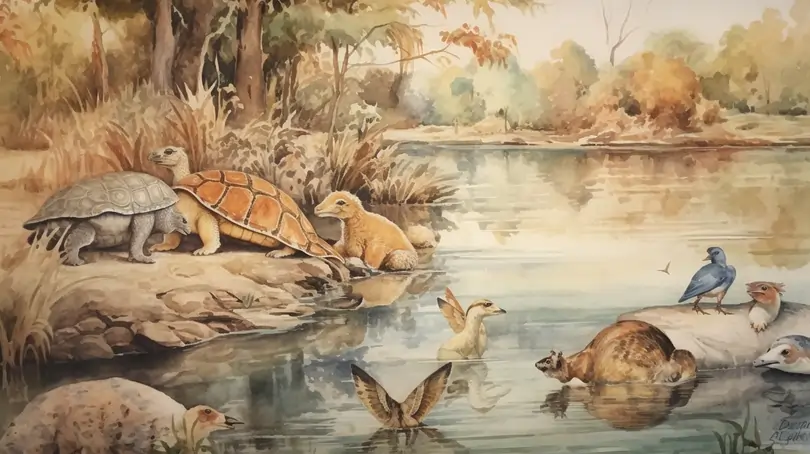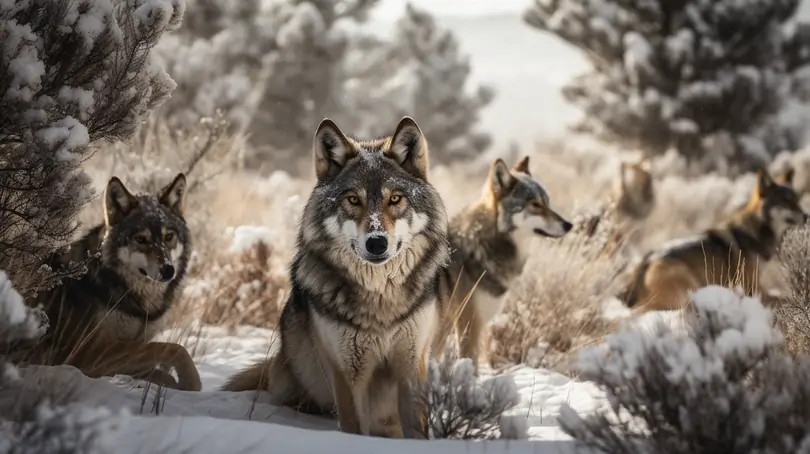Learn about different types of Monkeys: A comprehensive guide

Monkeys are one of the most intriguing and diverse groups of primates on our planet. Their unique traits, behaviours, and adaptations have long captured the fascination of researchers and enthusiasts. In this comprehensive guide, we take an in-depth look at different monkey species, offering a detailed understanding of what makes each of them extraordinary.
Monkey classification
Monkeys are categorised into two main groups: Old World monkeys and New World monkeys. These categories are based on geographical distribution and anatomical characteristics, including features like ischial callosities and prehensile tails.
Old World monkeys
Old World monkeys are predominantly found in Asia and Africa. They are characterised by their ischial callosities, which are toughened skin pads on their buttocks. Let's delve into a more detailed exploration of some prominent Old World monkey species:
Rhesus Monkey
Native to South Asia, the rhesus monkey, scientifically known as Macaca mulatta, stands out for its distinctive red face and remarkable adaptability to various environments. Their social structures and hierarchies are also of significant interest to researchers.
Mandrill
Mandrills, or Mandrillus sphinx, are the largest monkeys globally and are known for their strikingly colourful faces. They reside in the dense rainforests of Central and West Africa. Their complex social structures and vibrant appearance make them a captivating subject for study.
Japanese Macaque
Also referred to as the snow monkey, Japanese macaques (Macaca fuscata) are famous for their affinity for hot springs and their ability to thrive in Japan's harsh winter conditions. Their cultural significance in Japanese folklore adds an interesting dimension to their study.
Barbary Macaque
The Barbary macaque (Macaca sylvanus) is the only naturally occurring monkey in Europe, specifically in the Atlas Mountains of North Africa. Their unique geographical distribution and adaptations to various landscapes make them a subject of ecological interest.
New World Monkeys
New World monkeys inhabit the Americas, including South and Central America. They are characterised by their prehensile tails, which enable them to grasp objects. Here's a detailed exploration of some notable New World monkey species:
Howler Monkey
Howler monkeys, scientifically known as Alouatta, are recognised for their distinctive howling calls, which can be heard echoing through the forests of Central and South America. Their vocalisations and social behaviour are areas of particular interest to primatologists.
Capuchin Monkey
Capuchin monkeys, belonging to the genus Cebus, are renowned for their remarkable intelligence and tool-using abilities. They inhabit the forests of Central and South America and have been subjects of extensive studies in cognitive science.
Spider Monkey
Spider monkeys (Ateles) are known for their long, spindly limbs and exceptional climbing skills. Their role in forest ecology and their adaptations to arboreal life make them a subject of ecological and behavioural research.
Golden Lion Tamarin
Golden lion tamarins (Leontopithecus rosalia) are small, golden-coloured monkeys native to the Atlantic Forest in Brazil. They are critically endangered due to habitat loss, and conservation efforts are a key focus in their study.
Saki Monkey
Saki monkeys, belonging to the genus Pithecia, are known for their long, bushy tails and inhabit the rainforests of South America. Their adaptations to forest life and unique behaviours are subjects of scientific interest.
Titi Monkey
Titi monkeys (Callicebus) are small, monogamous primates found in South America. Their monogamous bonding systems and social behaviours are areas of extensive study.
Howling Spider Monkey
Native to Central and South America, howling spider monkeys are recognised for their vocalisations and prehensile tails. Their social structures and vocal communication have garnered scientific attention.
Squirrel Monkey
Squirrel monkeys (Saimiri) are tiny monkeys with large eyes and a distinctive white mask on their faces. Their adaptations to rainforest environments and their social behaviour are subjects of ecological and behavioural research.
A global array of Monkey Species
The world of monkeys is exceptionally diverse, with species adapted to a wide range of environments. Here are more remarkable monkey species from around the globe:
Proboscis Monkey
Proboscis monkeys (Nasalis larvatus) are known for their large, elongated noses. They inhabit the mangrove forests and riverine areas of Borneo. Their unique noses and riverine adaptations make them a focus of ecological research.
Golden Monkey
Golden monkeys (Rhinopithecus) are native to the high-altitude bamboo forests of central China. Their vibrant golden fur and high-altitude adaptations have garnered attention from conservationists and biologists.
Mandrill
Mandrills (Mandrillus sphinx) are the world's largest monkeys and are known for their colourful faces with striking patterns. They reside in the rainforests of Central Africa, and their complex social structures are subjects of extensive study.
Gibbon
Gibbons, belonging to the family Hylobatidae, are known for their melodious songs and swinging locomotion in the treetops. They are native to Southeast Asia. Their songs and arboreal lifestyles are of interest to ethologists.
Vervet Monkey
Vervet monkeys (Chlorocebus) are small, greenish-olive monkeys native to Africa. They are known for their distinct alarm calls and complex social systems. Their vocalisations and social behaviour are subjects of scientific research.
Monkeys in Culture and Symbolism
Monkeys have played significant roles in various cultures and hold symbolic significance. Here are a few examples:
- The Wise Monkey: In many cultures, monkeys symbolise wisdom and cleverness. The "see no evil, hear no evil, speak no evil" saying, often associated with three monkeys covering their eyes, ears, and mouth, represents wisdom.
- The Mischievous Monkey: Monkeys are also known for their playful and mischievous nature. They are often depicted as tricksters in stories and folklore.
- The Monkey King: In Chinese mythology, Sun Wukong, the Monkey King, is a legendary figure with incredible powers and adventures. He is a beloved character in Chinese literature and culture.
To conclude, this in-depth exploration of monkey species showcases the remarkable diversity, adaptability, and cultural significance of these primates. From the Old World monkeys of Asia and Africa to the New World monkeys of the Americas and the numerous species inhabiting diverse ecosystems around the globe, the world of monkeys continues to be a source of scientific fascination and cultural symbolism. We hope this extensive guide has provided you with a profound understanding and appreciation of the extraordinary variety within the realm of monkey species.


 SG
SG  VN
VN 



















